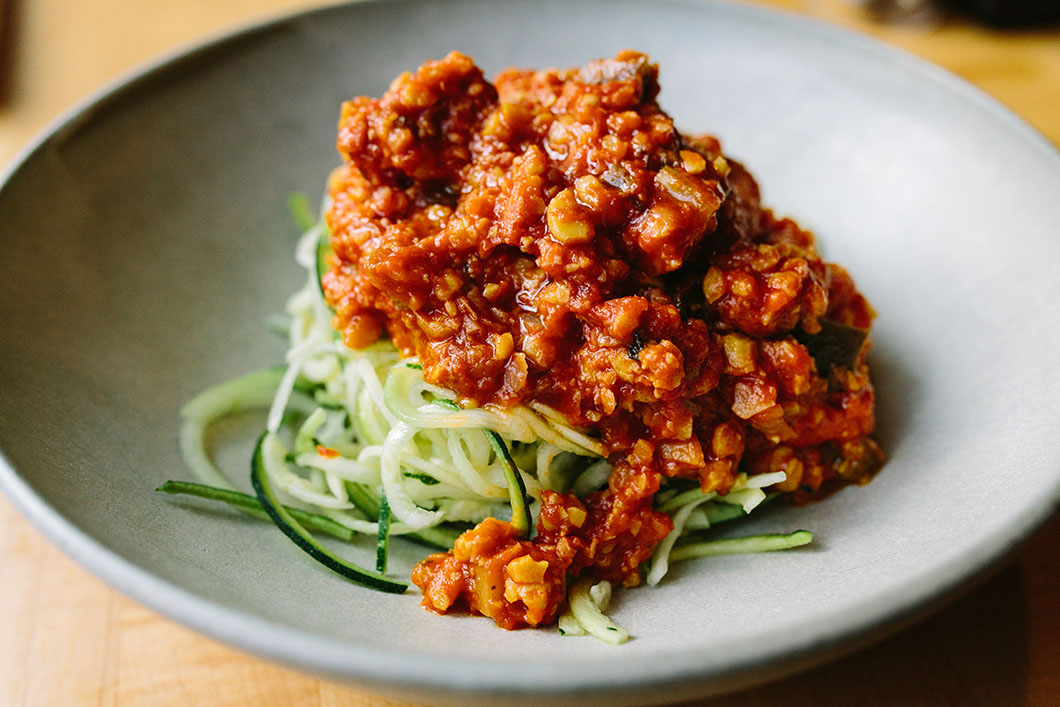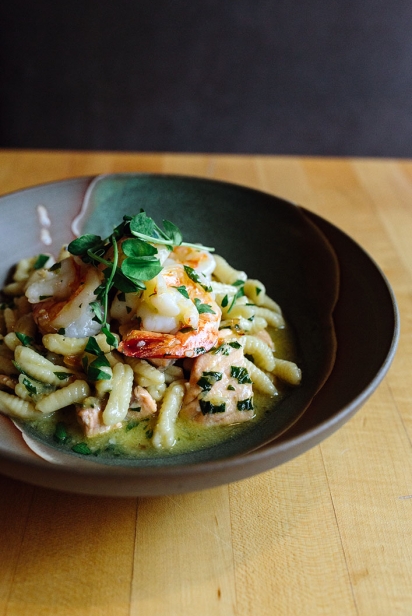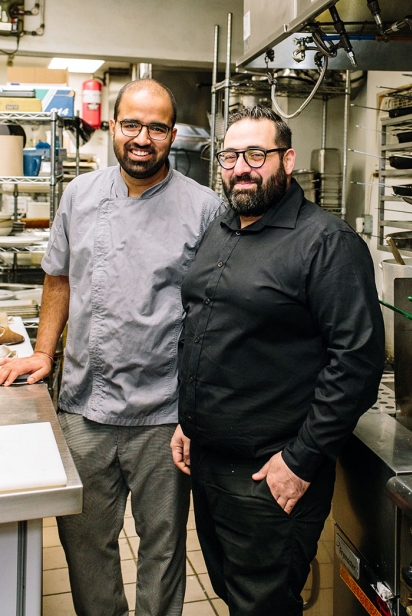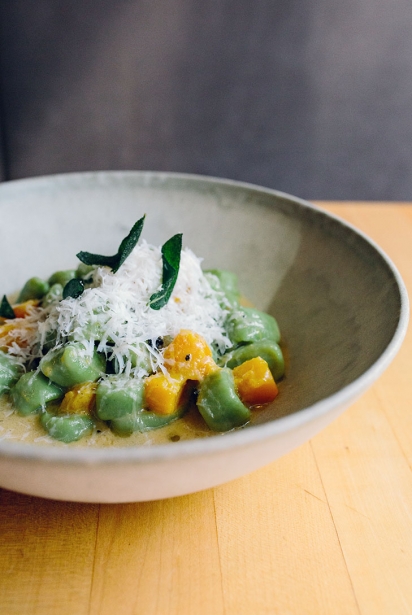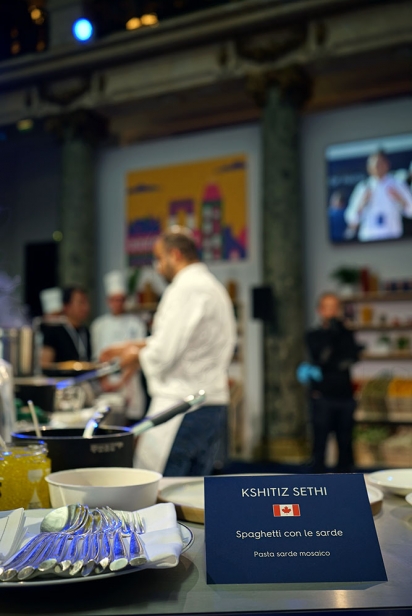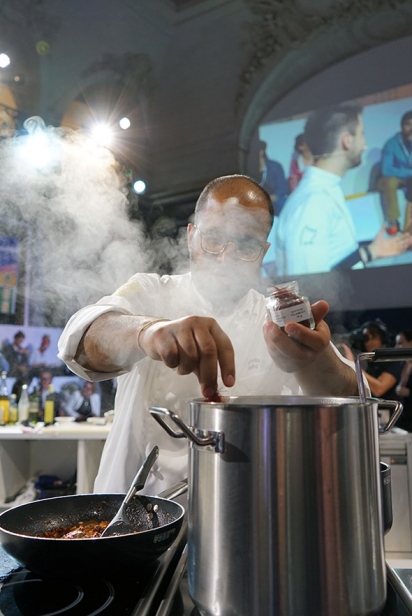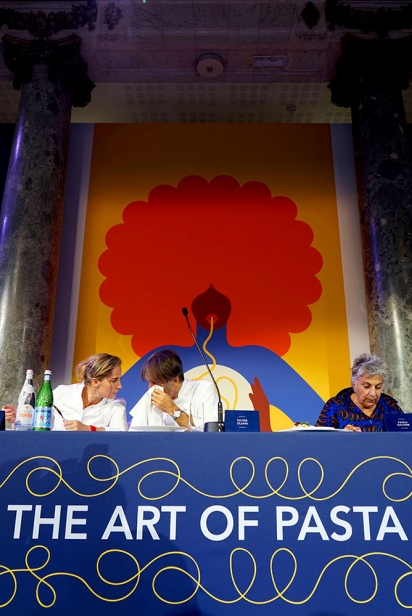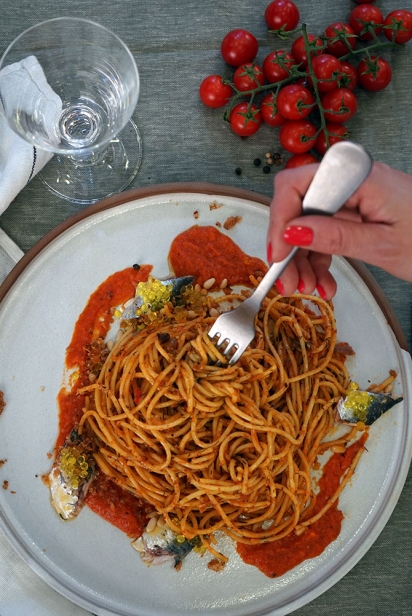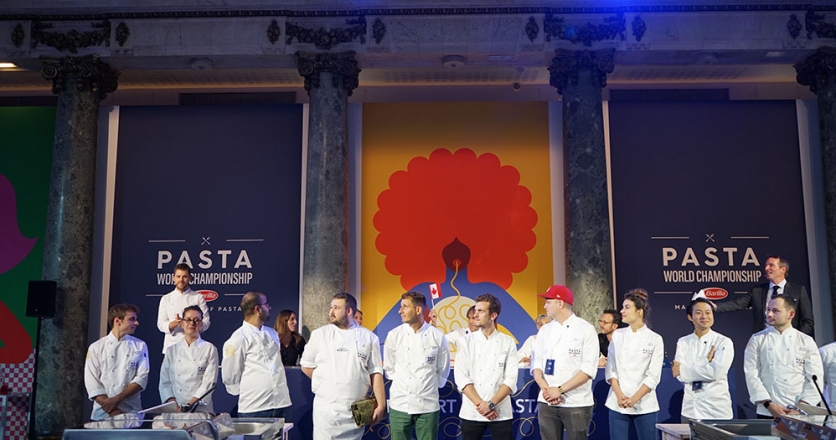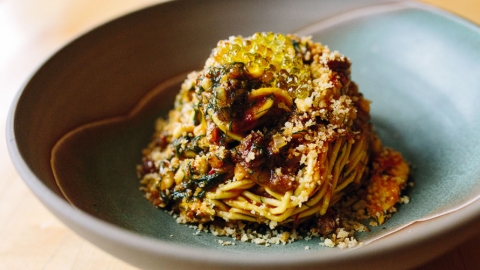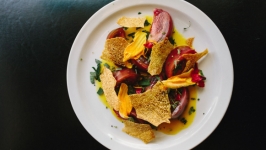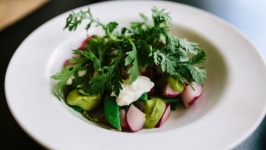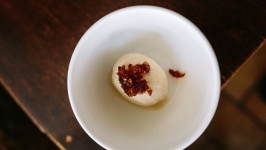From Paris, with Love for Pasta
The first time chef Kshitiz Sethi made spaghetti con le sarde, a traditional Sicilian pasta dish that plays on flavours of saffron, raisins, pine nuts and sardines, he can only describe his effort one way — “It was terrible.”
“It was not even edible,” he goes on, saying he served the dish to his older sister, who had the same sentiment about the plate of pasta in front of her. It was the first time the young chef experimented with sardines and it didn’t go well — the small but dominant fish overpowered the whole plate.
Back then, Sethi had no hint that that “terrible” dish would be his ticket to Paris, giving him a place to stand amongst the world’s culinary greats at the Pasta World Championship.
The 24-year-old came across the dish while studying Italian pasta classics for his job as chef de partie at Paese Ristorante, a 30-yearold Italian mainstay in North York. It appealed to him because it reminded him of the place he grew up — India.
“All these ingredients are familiar with what I used for cooking in India. We use a lot of saffron, a lot of raisins, a lot of pine nuts and fennel,” he says.
“I must have made 15 or 20 versions of it. But with every try, it was getting better and better,” Sethi explains. Preparing the dish for the 1000th or 2000th time, he points to the missing link and the finishing touch — a little heat from house-made pate di peperoncino, a popular Italian hot chili paste.
A New Delhi start
Growing up in New Delhi, Sethi’s love for cooking came from spending time in his father’s exacting bakery shop. His father opened the outlet after noticing then 15-year-old Sethi’s passion and interest in the kitchen, providing his son with a practice ground for running a food business. The long days witnessing dizzying messes of flour, sugar and nuts combined with savoury and sweet smells that permeated his clothes only reinforced Sethi’s drive.
While studying the business of food in India, Sethi opened his own business in a neighbouring town, Sonipat. In talking about his own restaurant, Sethi, who usually sports a calm and serious demeanour glows with a wide-brimmed smile. The quick food joint, serving traditional Indian dishes, was open for six months before Sethi shut it down — knowing he wanted to do more than fast-serve food.
That’s when he took a chance immigrating to Canada, leaving family and everything familiar behind. His older sister, who immigrated to Toronto a few years earlier, helped Sethi with the transition, on top of her obligations as primary food taster. Sethi enrolled in the Culinary Management program at George Brown College in 2016 and quickly found himself at the top of the class. That same year, walking in his neighbourhood near Bathurst Street and Wilson Avenue, he knocked on Paese’s door. He was greeted by Salvatore Morra, the restaurant’s general manager and the man who would become his mentor from that day forward.
“We’ve always had a little of a kinship bond,” says Morra, who’s known simply as Sal to Sethi. “He shows a passion you don’t always see, and to watch him grow from where he was to where he is… it’s something.”
Morra, whose Italian background is evident in his passionate evocations and explanations of everything on the menu, including his restaurant’s 800-plus-bottle wine list and the unique selection of amaros he sources himself, is modest as well, unwilling to admit his role as Sethi’s mentor — but the young chef jumps at the opportunity.
“He has guided me in so many ways, and he’s always pushing me forward,” he says. An unlikely partnership, perhaps, but one that has burgeoned in the last three years.
“Even if I don’t want to do something, he tells me I should go for it,” Sethi says of Morra’s counsel. And that includes making a run for the Pasta World Championship.
At the Canadian qualifiers, Sethi defeated several other chefs to capture the country’s card for the competition.
Culinary adventuring
But instead of immediately planning their trip to Paris, Morra decided they would first go on a little bonding adventure and allow Sethi to experience Europe. So, where does one head in October? Oktoberfest, of course.
But before the European trip, there was a little business to be had. The Barilla company sent its executive chef, Lorenzo Boni, to Paese to help Sethi with his dish. They worked through sauce ratios and plating arrangements and discussed every ingredient correlation and relationship on the plate.
After the brief interlude in Germany, it was off to France, the country whose gastronomy UNESCO named a “world intangible heritage” and, more specifically, to Paris, believed by many to be the culinary capital of the world.
From the very moment you turn up Rue Cambon in Paris, elegance and style gushes from every smooth building facade and carefully curated storefront. It is, after all, the street where the inimitable Coco Chanel opened her first hat shop in 1910 and later grew her empire, which remains to this day.
So it’s a fitting location for a worldly competition themed The Art of Pasta, 2019’s iteration of the Barilla Pasta World Championship. Held outside Italy for the very first time, 14 chefs from around the world were selected and accompanying international media filed into the Pavillon Cambon Capucines, a historical light-filled venue stacked with majestic marble columns and intricate features reminiscent of the world’s most elegant opera houses.
One by one, chefs from Australia and Brazil to the United Arab Emirates and Sweden paraded through the venue, holding their country flags high. The scene was evocative of the opening ceremony at the Olympic Games, with pasta-making being the paramount event.
Somewhere in the middle, Sethi waved the Canadian flag.
For Sethi — the stage, the media, the venue were like nothing he’d ever seen before. But he was unphased, and if there were an ounce of nervousness or stress, an onlooker never would have detected.
The hosts and judges for the competition are a dignified list that includes the world’s top Michelin-starred chefs, such as Davide Oldani of Ristorante D’O in Milan, and Lorenzo Cogo, the youngest Italian chef to ever receive a Michelin rating.
The competition itself celebrated eight years in Paris, initially launched by the Barilla family of Barilla pasta fame, a family-run company that dates back to 1877, the year Pietro Barilla opened a bread and pasta shop in Parma, Italy. It’s now proud to have four generations on the books, and Barilla’s great-grandsons are still actively involved in the company’s day-to-day business, even with its international growth over the last 135 years.
The format has evolved since its inception, but this year’s contest begins with “The Masterpiece” round, where each chef had 50 minutes to cook his or her signature dish, which is to be judged against a fellow competitor’s. Of the 14, seven move on to the second round — and one wildcard is added to the mix.
The competition begins
Sethi, creating his spaghetti con le sarde, was up against Gabriel Heintjes, a young Swiss chef making a dish he called “Somewhere Between Red and Yellow” — trofie-shaped pasta (short, thin and twisted strands) with sweet potato, kumquat, carrot and rosemary.
“This is my third competition in three and a half weeks,” Heintjes states, proving he’s a tough match for a competition freshman such as Sethi. “I’m trying not to stay in the classic range, the art of pasta is really about looking at things and seeing how you can think outside the box.”
With steadfast determination and no visible emotions (despite a malfunctioning sous-vide machine and plating setback), Sethi watched his timepiece tick down.
Mora stood on the sidelines and like any good coach, yelled out prompts at Sethi.
“Don’t forget the bread crumbs! You’ve got five minutes, you’re good, you’re good. Plating, remember your plating!”
The dishes were the fifth and sixth for the judges to taste on the first day, and the verdict was unanimous: it was the hardest judgement yet. Whispering behind napkins so the audience couldn’t lip-read their opinions, it was clear they were in a lock. The judges didn’t hold back, criticizing competitors for lack of acidity (or too much acidity), plating and mismatched flavour profiles. But French judge Amandine Chaignot was clearly in awe of Sethi’s complexity of flavours, questioning his background and inspiration. Oldani, on the other hand, though impressed with the taste, makes it clear Sethi’s plating and portion-size needed work.
“The flavour was good; the portion was too much,” he says. “If you work in the kitchen, you have to respect everything … you can’t throw away food.”
Ultimately, Heintjes won the round. But Sethi’s Paris story wasn't over yet.
“He was the competition underdog, he was the rookie, the least trained,” Morra says. “He was up against Michelin-trained chefs already.”
At the end of the first day of competition, with seven chefs cleared to move onto the second round, the chefs were called to the stage for the wildcard. With bated breath, the audience waited for the judges to make their call. Oldani raised a little Canadian flag, and Sethi received another chance at the title, but with sound advice from the Michelin-starred chef: “watch your portions.”
Round two
For round two, “The White Canvas,” chefs used Barilla’s line of healthier pastas — whole-grain, cereal grain and pulse varieties. Sethi recreated his chickpea and lentil “bolognese” sauce, a vegetarian interpretation with all the flavours and texture of the classic.
The judges, subtly impressed with the taste and texture of the sauce, launch Sethi over German chef, Zora Klipp, to enter the final round of four — eschewing the idea that his wildcard may have been just a stroke of luck.
A man of few words, Sethi seems unfaltered by the win and solely focused on what he has to do to become the Pasta World Champion, trait that perhaps may work in his favour in the hardedge culinary competition world. Any nervousness, angst or stress were impossible to read in the young chef’s body language and face, even with just seconds remaining on the clock.
In the end, Pasta World Championship veteran Keita Yuge of Japan (he competed two years ago) was crowned champion for his penne Gorgonzola profumo Giapponese — a decidedly worldly departure from traditional Italian pasta dishes, using oysters, seaweed, sake and yuzu.
But his whirlwind from New Delhi to Toronto to Paris in just three short years means Sethi’s story is really just beginning.
It's something on which Morra and Sethi both agree.
“Passion is key in this industry, skillset is a big part of it, but passion and drive are really it,” Morra says while looking on at Sethi in the Paese kitchen. “He’s advancing more than most people would, especially for those who come out of school and are green.”
Sethi has big plans and lofty goals, including staging at some Michelin-starred restaurants in Europe over the summer and entering a few more young chef competitions.
But ultimately, it’s at home where he wants to spend his time — taking a page from the Italian word paese, meaning village, perhaps. Sethi is independently active in the Indian food scene in Toronto, having bought his own equipment to participate in pop-ups whenever he can.
And ultimately, the goal is to come full circle and return to India, where his dreams began and share his food with that paese, too.
Paese Ristorante
3827 Bathurst St., North York, Ont.
paeseristorante.com | 416.631.6585 | @paeseristorante


